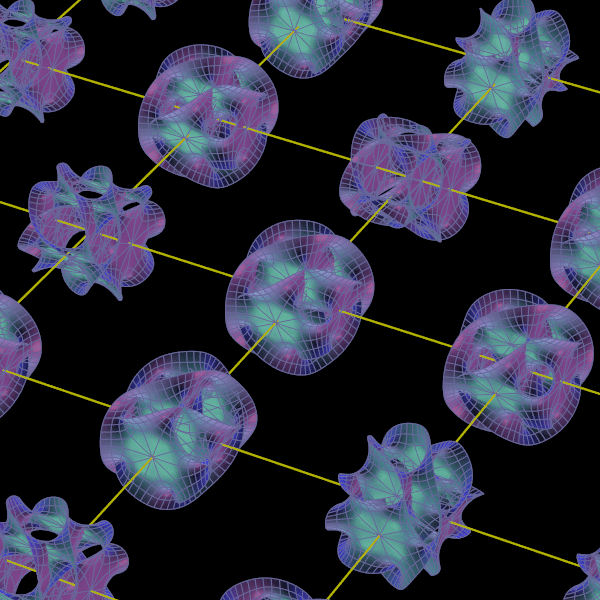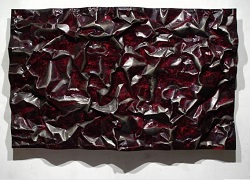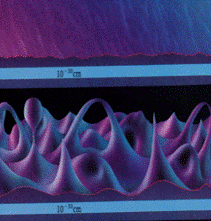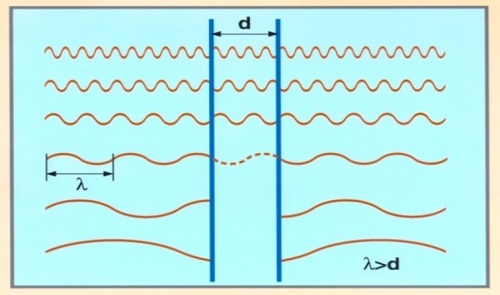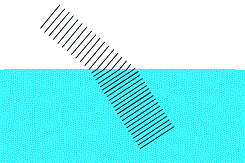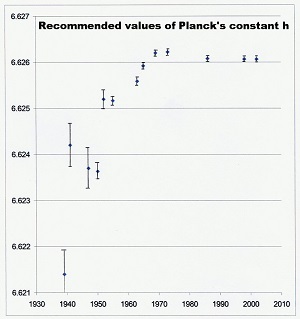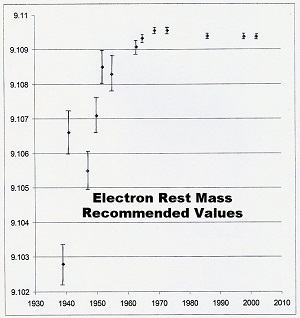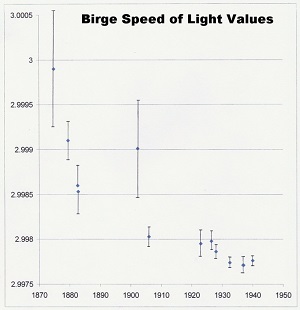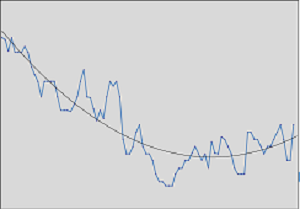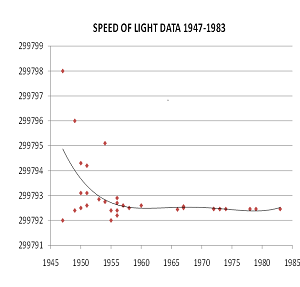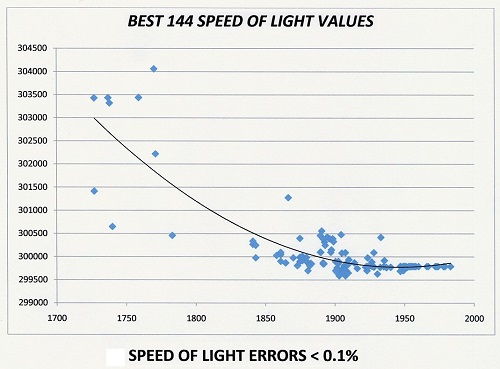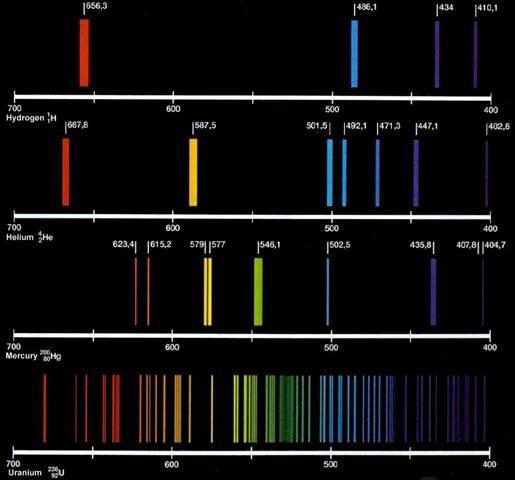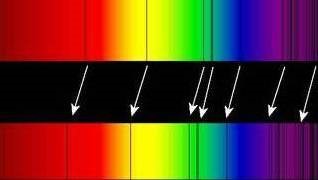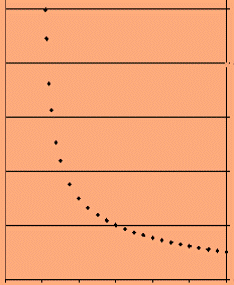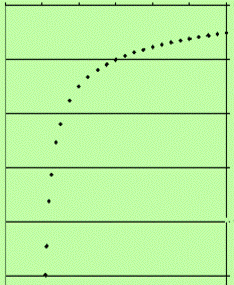return to Putting It All Together Summary of Zero Point Energy (ZPE) phenomenaDiscovering the Zero Point EnergyImagine that you have a container that can be perfectly sealed. Then remove all solids and liquids and gases from it so that no atoms or molecules remain. It is commonly thought that this is what a vacuum is. Indeed, in the 17th century, this concept gave rise to the definition of a vacuum as a totally empty volume of space. Today, this is called a “bare vacuum.” In the 18th century it was discovered that this vacuum would not transmit sound but would transmit light. But light is only a small fraction of the full electromagnetic spectrum of wavelengths which ranges from the very short wavelength gamma rays, down to radio and longer wavelengths. Because of this, it was realized late in the 19th century, that the vacuum could still contain heat or thermal radiation which is part of the same electromagnetic spectrum. If our container with the vacuum is then perfectly insulated so no heat can get in or out, and if it is cooled to absolute zero, or about minus 273 degrees C, (about minus 460 degrees F), all thermal radiation has been removed. It might be expected that a complete vacuum now exists within the container. However, both theory and experiment show this vacuum, the “physical vacuum”, still contains measurable energy. This energy is called the Zero-Point Energy (ZPE) because it exists even at absolute zero. The ZPE was later discovered to be a universal phenomenon, uniform, all-pervasive, and penetrating every atomic structure throughout the cosmos. The existence of the ZPE was not suspected until the early 20th century for the same reason that we are unaware of the atmospheric pressure of about 1 kilogram per square centimeter or 14 pounds per square inch that is imposed upon our bodies. There is a perfect balance within us and without. We only notice pressures on our bodies if it is above that atmospheric background level, no matter how slightly above. Similarly, the radiation pressures of the ZPE are everywhere balanced, and we only notice radiation if it is above this background level, even slightly above. The presence of this Zero Point Energy was first deduced by Max Planck in his paper of 1911 [1]. The suggestion was then picked up by Einstein and Stern as well as Nernst, and subsequently by others. It was found that the ZPE was made up of many more waves of short wavelengths than long wavelengths. Because there are relatively few long wavelengths, the vacuum is smooth and even featureless at the scale of yards and inches, or meters and centimeters. However, by the time we get down to the size of atoms and molecules, the vacuum has become a surging sea of electromagnetic waves. It has sometimes been called the “seething vacuum.” At the wavelength of the smallest waves, the structure of the vacuum becomes restrictive. The vacuum seems to behave something like a woven fabric, and this is referred to as the “fabric of space.” An illustration of three possible models for this fabric is in Figure 1. Because the ZPE is made up of far more short waves than long ones, most of the effects of the ZPE occur at the atomic level or smaller. However, there is a restrictive limit as to how short those waves can be, which is caused by the ‘fabric’ quality of space at that level. This limit is called the Planck length and is equal to 1.61 x 10-33 centimeters. That is the distance between the centers of the individual “shapes” or “peaks” illustrated in Figure 1. Waves shorter than this limit are absorbed into the “fabric.” There are two branches of physics today, and they have very different approaches regarding the Zero Point Energy. Despite Planck’s second paper in 1911 in which he showed that the ZPE was real, four papers were written in the 1920’s which turned the course of physics away from the classical approach and toward what is now referred to as Quantum Physics, or Quantum Electro-Dynamics (QED physics). This approach treats the ZPE as entirely hypothetical and useful only in mathematical approaches.
However in 1962, de Broglie, a physicist who had written one of those four papers, wrote that physics may well have taken a wrong turn in the 1920’s [2]. Instead, data suggest the Zero Point Energy is real and measureable and, when that fact is combined with classical physics, quantum phenomena are much more easily understood and worked with. This new approach is called Stochastic Electrodynamics, or SED physics, because of the random or stochastic distribution of the ZPE waves in space. The experimental evidence that hinted at the existence of the ZPE comes mostly from the realms of atoms which are being ‘jiggled’ by the impacting waves of the ZPE. For instance, the ZPE explains why cooling alone will never freeze liquid helium. Unless pressure is applied, these ZPE fluctuations jiggle the tiny helium atoms so intensely that it prevents them from getting close enough to permit solidification. The reason is that the ZPE waves which cause the jiggle in any given atom are about the same wavelength as the size of that atom. Because helium is the smallest of all atoms, the ZPE waves are of shorter wavelength than for other atoms, and so there are more of them, which give a more violent jiggle to helium than for any other atom. In electronic circuits, like microwave receivers, another problem arises because ZPE fluctuations cause a random ‘noise’ that places limits on the level to which signals can be amplified. The ‘noise,’ caused by the ‘jittering’ of atomic and subatomic particles, can never be removed no matter how perfect the technology. Indeed, the suggestion has been made that this incessant electronic 'noise' might be harnessed as an energy source. Other experimental evidence for the existence of the ZPE as electromagnetic waves comes from the Casimir effect. This effect can be demonstrated by bringing two large metal plates very close together in a vacuum. When they are close, but not touching, there is a small but measurable force that pushes them together. The explanation of this effect comes straight from classical physics. As the metal plates are brought closer, they exclude all wavelengths of the ZPE except those which fit exactly between the plates. In other words, all the long wavelengths of the ZPE have been excluded and are now acting on the plates from the outside. Because there are no long waves acting from inside the plates to balance the pressure, the combined radiation pressure of these external waves then forces the plates together. In November 1998, Mohideen and Roy reported verification of the effect to within 1% [3]. The effect is illustrated in Figure 2.
According to the SED branch of physics (which deals specifically with the actual ZPE), the electron, for example, undergoes about random hits per second from the impacting ZPE waves. This is known as the Compton frequency. This means an electron changes direction and “jitters” 1020 times each second. In science this jitter motion is known by its German equivalent “zitterbewegung.” For this reason, the electron’s precise position and momentum can never be accurately measured at any given instant; this is called “quantum uncertainty.” Even an electron’s exact atomic orbit is uncertain or ‘smeared out,’ giving rise to uncertainty in momentum. This occurs because these impacting waves cause the electron to undergo over 18,700 changes in direction in the time it takes to execute just one orbit around the atomic nucleus. A similar situation exists for all subatomic particles. The picture that emerges is that of a negative electron being attracted to the positive proton(s) in the nucleus. However, because of the impacting waves of the ZPE causing it to continually change its direction of movement, the electron is forced to “orbit” the nucleus instead of falling into it. It can be shown that the more hits the electron receives per unit time, the shorter the distance the electron travels in a straight line between the hits. The overall result is that the orbit radius will tend to become smaller with more hits. Has the Zero Point Energy Strength Changed? The evidence says yes. Most cosmologies start with the stretching or expansion of the universe. That concept is accepted here. Consider a rubber band for a moment. When it is stretched, energy is invested into its fabric as potential energy. When the rubber band is released, that energy goes into its motion and it becomes kinetic energy. In a similar way, the initial stretching of the cosmos put potential energy into its fabric. This is then converted to the kinetic energy of the ZPE. In the same way the potential energy converts to kinetic energy most rapidly immediately after the rubber band is released, the ZPE built up extremely rapidly at first and then tapered down until the conversion was complete. The physical processes involved are well-known and given in Cosmology and the Zero Point Energy, as well as in "Zero Point Energy and the Redshift." However, hydrogen cloud data (discussed in Chapters 2-5 of Cosmology and the Zero Point Energy, and also on "The Expansion of the Universe and the CMBR") indicate that after a period of time, the stretching ceased and the universe became static. In 1993, Narlikar and Arp demonstrated that a static cosmos would be stable and would not collapse provided that it oscillated slightly in a variety of modes around its mean position [4]. After the universe became static, the ZPE would continue to build until all the potential energy was converted to the ZPE. Then, once the ZPE had built up to its maximum, it was maintained by a feedback mechanism as outlined by Puthoff and others [5]. As the universe continued to oscillate about its new average position, the perceived strength of the ZPE would also oscillate. Thus when the universe was at its maximum size, the same ZPE strength was in a larger volume, so at any point in space, the ZPE energy density would be measured as less. Alternately, when the cosmos was at its minimum size, the same ZPE strength was contained in a smaller volume and so its energy density was greater. Regardless of this, however, the ZPE strength throughout the whole universe is the same at any given instant of time. Virtual Particles The electromagnetic waves of the Zero Point Energy are not only of all wavelengths, they are going in all different directions at once. In other words they have a random or stochastic distribution. The interaction of these waves may be pictured as being somewhat similar to the waves of the sea. When something such as a passing boat causes a cross-current, and ocean waves meet, the waves peak, crest and form whitecaps, which then die down quickly and disappear. This occurs in the ocean because of the constructive interference of wave heights (amplitudes) which build up because wave energy is added to the system. In the same way, when ZPE waves meet, they create a concentration of energy that results, not in the formation of whitecaps, but rather in the formation of positive and negative particle pairs. Because these pairs will almost immediately recombine, releasing the energy that caused them, they are referred to as ‘virtual particles.’ During their brief existence, however, they behave exactly as regular particles do. Virtual particles can happen because energy and mass are inter-convertible. However, in order to maintain conservation of electronic charge in the vacuum, virtual particles must be in the form of particle-antiparticle pairs. There is a veritable zoo of such particles, such as electron-positron pairs, or proton-antiproton pairs or a positive and negative pion. It has been calculated that, at any instant, there are at over 1063 such particle pairs in any cubic meter (or cubic yard) of space. Therefore, if the strength of the ZPE increased, the number of virtual particle pairs present at any instant would have increased in proportion. Effectively, space would have become “thicker” with these virtual particle pairs. Conversely, if the ZPE strength decreased, the number of virtual particles in a given volume would likewise decrease. Because these particles are electrically charged they control the electric properties of the vacuum. Because these charged particles also move, and a charge in motion (an electric current) always produces a circling magnetic field, they also control the magnetic properties of the vacuum. Because the strength of the Zero Point Energy (the number of ZPE waves per unit volume) controls the number of virtual particle pairs in a given volume of space, any change in the strength of the ZPE changes the number of virtual particle pairs per unit volume. This, in turn, brings about a change in the electric and magnetic properties of the vacuum. The electric properties of the vacuum are described by a quantity known as the permittivity of free space, (designated by the Greek letter epsilon, ε), while the magnetic properties are controlled by the permeability (designated by the Greek letter mu, μ). If the ZPE strength increased, then both ε and μ would also increase proportionally since there would be a proportional increase in the number of virtual particle pairs. This is discussed fully in Cosmology and the Zero Point Energy and "A Plasma Universe With Changing Zero Point Energy." The ZPE and the Speed of Light As well as controlling the electric and magnetic properties of the vacuum, the ZPE also controls the speed of light in a vacuum. As a photon of light proceeds through the vacuum, it is briefly absorbed by a virtual particle and then re-emitted as the particle pairs annihilate. An instant later the process repeats. Thus the path of a light photon is like a runner going over hurdles. As the strength of the ZPE increases, so, in direct proportion, do the number of virtual particles per unit volume. Therefore, as a photon travels, the number of interactions with virtual particles will increase in direct proportion to any ZPE increase. The more virtual particles per unit volume, the longer it takes light photons to traverse it. Thus, as the ZPE strength increased through time and space became “thicker” with virtual particles, photons took longer to reach their destination. An analysis shows that the speed of light (designated by the symbol “c”) is inversely proportional to the ZPE strength. Thus, as the ZPE strength increases, the speed of light drops in inverse proportion. The basic equations used by Maxwell to describe the speed of light did so in terms of ε and μ. These concepts are discussed in Chapters 2 and 3 of Cosmology and the Zero Point Energy, with a discussion of the c measurements available in "History of the Speed of Light Experiments." The question then arises, can light slow down as the ZPE gets stronger without light being ‘bent’ or refracted the way light is bent as it goes from air into water as shown in Figure 3? When you put a straw into a glass of water, the straw appears ‘broken’ at the surface of the water, as in Figure 3. This is because light is slowing down in the thicker medium of water. But when the straw is in the glass of water, two different mediums are present simultaneously in the path of the light ray: air and water. This produces the ‘broken’ look. The waves in air are traveling at an unchanged speed, but the waves crowd together in the denser medium (the water) and therefore the wavelength changes. However, that is not what happens in space as the ZPE strength is the same throughout the whole cosmos at any given instant of time. This is because the stretching of the fabric of space, which produced the ZPE, was uniform.
In order to understand what is happening in space, then, it must first be noted that, as the photon travels through space and its speed declines, Maxwell’s equations demonstrate that the photon’s energy is maintained. The photon’s energy is shown by its wavelength (which is its color). If its energy is maintained, despite its speed, this means that the photon’s wavelength, and hence its color, remains unchanged. (There is such a slight change of wavelength in the water when the straw is inserted that we don’t really see the change in color.) Instead, it is the photon’s frequency that changes in proportion to the speed. It is rather like a long series of freight cars being pulled by a locomotive that is slowing down. The size of the individual cars (the wavelength) does not change, but the number of cars passing the observer in a given amount of time (the frequency) gets less. Light from far distant objects behaves in the same way. Because the ZPE is increasing homogeneously throughout the whole cosmos, then the whole long train of waves is slowing simultaneously. There is no difference in the medium in the path of the light ray. At any instant, the medium is uniform along the whole length of the ray. Therefore the horizontal distance between the wave crests remains the same. Only the frequency, the number of waves passing a given point in a unit of time, will drop. In space, through time, all the changes in the ZPE occur simultaneously throughout all of the cosmos, so that different mediums and hence different velocities are not present at the same time. Even extremely long wave-trains, such as those from distant quasars, are slowing simultaneously throughout the cosmos so there is no bunching up effect. Just as the cars on the freight train are not changing their length as the train slows, there is no refracting or bending of light with changes in the Zero Point Energy. (Note: to avoid apparent contradiction, a local increase in ZPE strength does occur around massive bodies as explained later. It is because of this increase in ZPE strength locally that light rays are ‘bent’ in gravitational fields.) The ZPE and Planck’s Constant According to Planck’s 1911 analysis, the strength of the Zero Point Energy is measured by what is now called Planck’s constant, h. The greater the ZPE strength, the higher is the value of h; the less the ZPE strength, the lower is the value of h. Because of this, h is a measure of quantum uncertainty, which depends on the ZPE strength. Because h is a measure of the ZPE, and the speed of light drops in inverse proportion as the ZPE increases, Planck’s constant, h, multiplied by the speed of light, c, is always an absolute constant. A simple example can be shown with the number “12.” The total of 12 will remain constant whether we get there by ,1 x 12, 2 x 6, or 3 x 4. In the same way, hc can remain constant if h increases at the same time that c decreases, or vice versa. In other words, h is proportional to 1/c or c is proportional to 1/h. This conclusion is supported by observations out to the furthest reaches of space with an accuracy of parts per million. This has implications for studies into the behavior of something called “the fine structure constant.” The fine structure constant, called Alpha, or α, is used in relation to the measurement of the wavelengths of light put out by the atoms of different elements. This constant contains the product hc as part of its formulation. The fine structure constant has been examined recently by John Webb and others to see if the speed of light has changed [6]. Unfortunately, those doing the examination have adopted what is called a minimalist position in which only one constant in the group is considered to vary. They then look at the product, hc, and, because that has remained constant over astronomical time, the claim is made that the speed of light has not changed. What this ZPE research has shown is that quantities like hc and the fine structure constant can themselves be invariant while, at the same time, their component parts may vary synchronously. Wesson was aware of just such a possibility. He wrote: "It is conceivable that the dimensionless numbers ... could be absolute constants, while the component parameters comprising them are variable. The possibility of such a conspiracy between the dimensional numbers was recognised by Dirac (see Harwit 1971)." [7]Thus Paul Dirac, Martin Harwit and Paul Wesson have each recognized this possibility, which has been ignored by many current researchers. Energy and Subatomic Masses The term "mass" can be very confusing to those not familiar with atomic and subatomic terms. When we think of mass, we think of how much something weighs. Even that is not accurate. Weight is a gravitational thing. So the same density of matter on earth will weigh less on the moon, for instance. Mass, in terms of what we can see in the world, is related to the density of material in a given volume. When we are dealing with atoms and subatomic particles, we clearly need a different definition. So "mass" at that level refers to the amount of deviation any subatomic particle makes as it goes through an electric and magnetic field. The greater the mass, the less the deviation. This is done using a mass spectrometer. In chemical reactions, mass is measured by the amount of energy given off divided by the speed of light, in accord with E= mc2. Interestingly, subatomic particles are usually assumed to be charges without mass, and that some mechanism is needed to impart mass to them. It is for this purpose that the Higgs boson was postulated to exist. The energy from a cloud of Higgs bosons around each particle is supposed to impart mass to the particle on the basis of the equation E = mc2. This, however, depends on how well these Higgs bosons “stick” to the particle. But, as Wilczek, of the Massachusetts Institute of Technology, points out, nobody knows what governs the amount of “sticking” [8]. Although scientists at the CERN facility announced the discovery of a “Higgs-like particle,” on 4 July, 2012, there are some lingering doubts as to whether it does what the theoretical model wants it to do [9]. Whether or not the Higgs boson even exists, SED physics does not need it to impart mass since the SED approach acknowledges the reality of the Zero Point Energy. According to SED physics, the random battering of the ZPE waves imparts motion to the point charges that make up the various subatomic particles. This motion is a kinetic energy. As expressed by the famous E = mc2, energy and mass are inter-convertible. It is the Zero Point Energy, then, which gives subatomic particles their mass. This has been quantified by Haisch, Rueda and Puthoff in a series of papers [10]. It therefore follows that if the ZPE strength increases, so, too does the rest-mass of all subatomic particles. The formula that emerges from the mathematical treatment of this phenomenon shows that the atomic mass, m, is proportional to the square of the ZPE strength, which is the same as the inverse square of the speed of light or 1/c2. This means that mc2 (and, therefore, energy itself) is a constant in the same way that hc is a constant even if the ZPE strength is changing. This can now be applied to electrons in orbits and nucleons in orbitals. As the ZPE increased, the 'jittering,' and thus the mass, of the subatomic particles increased. This, however, also resulted in a slowing of orbital speeds for the electrons. Thus, the ZPE approach indicates the kinetic energy of all of these particles is conserved. The kinetic energy of these particles is given by ½mv2 where v is the tangential velocity (the velocity any electron has at any instant in its orbit). If m varies as 1/c2, it follows that v must vary as c, if kinetic energy is conserved in the atomic environment. This means that when the ZPE strength was lower, and sub-atomic particle masses were lower, then their rate of movement was faster proportional to the speed of light. In other words, electrons orbit the nucleus of atoms at a rate proportional to c. This also relates to the fine structure constant. One of the earliest definitions of the fine structure constant was that “it is the ratio of the velocity of the electron in the first Bohr orbit to the velocity of light in a vacuum.” [11] It has been proved that the fine structure constant is a fixed constant to parts per million across the universe. So, any alteration in the properties of the vacuum affecting c, must also and equally affect the speed of electrons in their orbits. The motion of all subatomic particles is similarly affected. Measuring Time In our daily lives, we measure time with clocks and calendars. This type of time-keeping is based on gravitationally controlled movements. This involves the movements of the earth in its rotation on its axis (the day), the moon’s orbit around the earth (approximately a month), and the earth’s orbit around the sun (a year). It can be shown that changes in the Zero Point Energy do not affect these orbital motions. Consequently, time measured by this method has been steady throughout history. There is another form of timekeeping used by science. It is based on atomic and subatomic motions and reactions. The time it takes an electron to orbit a proton in a hydrogen atom is one form of atomic clock, and the time it takes heavy elements to decay into their daughter elements is another example of this way of measuring time. Because atoms are electrically charged particles in motion, their interactions are electric and magnetic in character. Since the ZPE controls the electric and magnetic properties of the vacuum, atomic and subatomic phenomena, including radioactive decay, are dependent upon the strength of the Zero Point Energy. This means that all atomic clocks tick at a rate inversely proportional to the strength of the ZPE. Therefore, any changes in the ZPE will affect the rate of the 'ticking' of atomic clocks. At this point, the observational evidence becomes important. Data from the last 100 years indicate that Planck’s constant, h (the measure of ZPE strength), and atomic masses, m, have increased. Because light is electromagnetic in character, its speed will be affected by the properties of the vacuum as well. Thus, the speed of light, c, has decreased. All of this means that the run-rate of atomic clocks, t, against the orbital clock has been slowing. The graphs of the recommended and internationally accepted values of these quantities are given in Figure 4. These graphs show that a change in direction, or a flat point, occurred around 1970. That may be taken as evidence for a change in the direction of the Narlikar-Arp oscillation of the cosmos affecting ZPE strength [4]. Figure 5 gives more detail of the changes in quantities around 1970.which may show this oscillation
These data all point to a ZPE which can change. However these graphs only go back a hundred years or so. Can we go back further? When the observations of the speed of light are studied in detail, we can obtain data back over 300 years or more as plotted in Figure 6 below. This is discussed in detail in Cosmology and the Zero Point Energy, Chapter 3, and "History of the Speed of Light Experiments." The decline in the value of c was noticed over that period by many scientists, so the suspicion is that the ZPE really was increasing during that time. This was commented on and discussed by a number of scientists in peer-reviewed journals at that time.
This means that we need more information regarding the long-term behavior of the ZPE, since, given the history of our universe, 300 years is not much time. The data indicate that the ZPE was lower in the early days of our universe. This means that the speed of light would have been higher back in the past, and that atomic clocks would have been running faster. Therefore, we should look at the universe itself to provide important data. But to do so, we need to see the effects of the ZPE on atomic behavior, and trace those effects in the light emitted from atoms in distant galaxies. We know how atoms react to changes in the strength of the Zero Point Energy. We also know that the farther out in space we look, the further back in time we are looking – both are linear progressions. So, by looking out into space, we could track atomic behavior, and that would tell us how strong the ZPE was at any given point in time back to the origin of the universe. The ZPE and the Redshift According to classical physics, an electron orbiting a proton will be radiating energy. That means that as it radiates, or loses, energy, it would have to spiral into the nucleus, collapsing the entire atom. However this does not happen. QED physics says it does not happen because quantum laws do not allow it to happen. This is a circular argument with no meaning. We formulate “laws” in physics, and other fields, to describe what we see always happening. But the laws are actually only descriptions and do not deal with why that particular effect seems to be universal. A law in physics therefore cannot be the cause of something; it is the description of something. Descriptions are not causes. It is in SED physics we find a reason for why the electron, although it is radiating energy, does not spiral into the nucleus. The answer lies with the effects of the Zero Point Energy. The ZPE waves impact the electrons, imparting energy to them. The energy that electrons radiate as they orbit their protons can be calculated, along with the energy that these electrons absorb from the background ZPE in which they are immersed. For a stable orbit, the energy lost by the electron is equal to the energy gained from the ZPE. Quantitative analyses were done, and the results were summarized by de la Pena who stated that “Boyer and Claverie & Diner have shown that if one considers circular orbits only, then one obtains an equilibrium [orbit] radius of the expected size [the Bohr radius]: for smaller distances, the electron absorbs too much energy from the [ZPE] field…and tends to escape, whereas for larger distances it radiates too much and tends to fall towards the nucleus.” [12] In 1987 Puthoff examined this further in an SED context. His conclusion carries unusual significance. It reads: “This carries with it the attendant implication that the stability of matter itself is largely mediated by ZPF phenomena in the manner described here.” [13]. Thus it appears that the very existence of atomic structures throughout the universe depends on this seething sea of ZPE to maintain them. Without the Zero Point Energy, all matter in the cosmos would collapse. Several articles in “New Scientist” entitled “Why atoms don’t collapse” discussed this phenomenon in July 1987 and July 1990. Puthoff’s equations also demonstrate that the ZPE controls the angular momentum in atomic orbits. “Angular momentum” is the term which describes any one body in orbit around another. This can be circular or elliptical. A weight on a string swung around is circular, while a planet around the sun is elliptical. The basic formula for this is mass times velocity times radius, or “mvr.” Atomically, Planck’s Constant, h, over 2 times pi equals mvr, or mvr = h/2π. Electron orbits have levels – distances out from the nucleus. These levels are separated by integral values of h (h, 2h, 3h, 4h, etc.). This separation does not refer to distance between the levels but to the energy of the electron in each level. As the ZPE strength increases with time, so, too, does the numerical value of h – the energy of the electron -- and with it the angular momentum of every atomic orbit. This means that all atomic orbits gain energy as the ZPE strength increases. Because the ZPE is the same throughout the universe, all atomic orbits will gain energy simultaneously. A photon of light is produced when an electron which has been forced out of its normal position relative to the nucleus snaps back into position. The energy it took to force it out is released as light. Thus, as the ZPE increases, transitions of electrons between those orbits will then emit more energetic photons of light as well.
This allows us to measure ZPE behavior throughout the universe in the following fashion. Here on earth there is a standard for each of the ‘bar codes’ produced by light from the various elements. However, the farther out in space we go, the more these identifiable bar codes become shifted more and more to the red end of the spectrum. The same patterns exist, so we know what the elements are, but they are not at the ‘right’ place on the color spectrum. They are shifted towards the red end of the spectrum as shown in Figure 8. The wavelengths go from ‘long and lazy,’ at the red end of the spectrum, to very short and energetic at the blue end. So the red end of the spectrum is the less energetic end.
The standard explanation for this “redshift,” or longer wavelength for a given line, is that the universe is expanding at an ever-faster rate and so the result is a stretching out of the light waves. Since the length of the waves determines the color they produce, the theory is that this stretching then produces longer and longer waves the farther out we see, and thus redder and redder shifts. There are problems with this theory. If the fabric of space itself were stretching, thus lengthening out the light waves themselves, then the black lines (or bright lines) in the ‘bar codes’ should also become wider and perhaps fuzzier in appearance. This does not happen; these lines remain thin and sharp regardless of distance. When this problem is pointed out to them, cosmologists usually turn to the alternate explanation. That alternate explanation is that the redshift is due to a Doppler effect of the galaxies themselves racing away from each other. The further away a galaxy is, the faster it is moving away from us. The effect is shown in Figure 9 where light waves bunch up ahead of a moving source and are shortened or made bluer, while those trailing behind are lengthened or made redder. If this is applied to the light from galaxies, it implies that they are racing away from us – the further out they are, the faster they are racing away – so the universe is expanding.
There are two problems with this. First, the most distant galaxies are racing away so fast that the motion would disrupt them. But no sign of any such disruption can be seen. Second, Astronomer William Tifft noted that the redshift seemed to go in jumps or was “quantized.” Some, who initially disagreed with him, later ended up supporting what he found [14]. If the redshift were due to motion, that motion would not be expected to come in jumps. A car accelerating along a highway does not suddenly jump from 45 miles per hour to 50 miles per hour and then to 55 and on. There is, rather, a smooth progression of speed. This is what should be expected from red shift measurements if the universe were expanding. However, the redshifts come in groups, with jumps in between. Sometimes the jump goes right through the middle of a galaxy. A redshift jump in the middle of a galaxy, if the redshift were due to motion, would indicate a difference in motion in the galaxy itself, which would disrupt the galaxy. That is not observed. In addition, for some galaxies, the redshift actually became less by one quantum jump over a period of 15 years. This means that the speed of the galaxy through space must have dropped by one quantum jump during that period of time. This is difficult to account for if the universe is expanding, and especially if it is expanding at ever increasing speeds, as is currently claimed. This claim is made because of the extremely high red shifts measured at the farthest reaches of the universe. These red shifts are so high that they would indicate total disruption of any galaxies involved, but that also is not seen. Thus, the quantized redshift negates the contention that it is caused by a Doppler shift. By way of contrast, however, the red shifts are explicable in terms of a ZPE increase affecting atomic orbits. When all the evidence and data are considered, the indication is that the redshift is probably a measure of the strength of the ZPE. As the ZPE increased smoothly, there was a resistance to change in the atoms. They held off until they could no longer resist the higher energy level. At that point every electron in the universe jumped to a higher energy level. Think of trying to push a heavy object – you increase your pushing until the object jerks forward. Again you start increasing your energy and again it is resisted until it has to jerk forward again. This is what happened to electron energy. Although the ZPE energy increased smoothly, resistance to it resulted in a series of jerks, through time, to increased energy levels for the electrons. This affected the light output of the atoms. The higher the energy level of the electron, the more energy was required to force it out of its correct position and thus the more energy it released when it snapped back. That meant the light emitted was a bit more to the blue, or energetic, end of the spectrum than the light emitted previously. This would easily give quantized redshifts. That means that our ‘standard’ here on Earth for the spectrum lines in various elements would be at the most energetic, or blue, level. As we look out farther into space, past our Local Group of galaxies, we see the light emitted shifting to the redder end of the spectrum, or the less energetic end. So if atomic behavior alone is considered, increasing redshifts as we look farther and farther out may be indicating that atomic orbits were less and less energetic in the past. Additional evidence is presented in Chapter 5 of Cosmology and the Zero Point Energy and also in "Zero Point Energy and the Redshift." The lower the ZPE strength in the early universe meant that redder light was emitted by atoms as orbit energies were lower. If this is true, it means that the redshift of most astronomical objects gives us data on ZPE behavior back to the origin of the cosmos. This, then, allows us to accept the usual graph of astronomers of increasing redshift with distance as describing the decreasing ZPE strength as we look back in both time and hence distance. The redshift graph (Figure 10 left) is the inverse of the ZPE graph (Figure 10 right). The left hand graph also shows how the rate of ticking of atomic clocks behaved and how the speed of light behaved, starting very fast initially and then tapering down to their present rates. The right hand graph shows how the ZPE and Planck’s constant both built up with time after initially very low values. We can also use the left hand graph to correct from atomic time (vertical axis) to orbital time (horizontal axis) as orbital time rates are unchanged by variations in ZPE strength.
The Zero Point Energy and Relativity Finally, the SED approach using the Zero Point Energy can be shown to produce the same effects as Einstein’s relativity, but without the restrictive postulates that relativity requires. Furthermore it can be done with intuitive concepts and high school mathematics. Those two basic postulates of relativity have recently been called into question (the lack of any frame of reference for any movement in the universe and that the speed of light has always been a constant). The material on the speed of light has been discussed above. It is the concept of "no frame of reference" which needs to be discussed. It is relativity’s contention that there is no absolute reference frame anywhere in the universe; everything is merely relative. The discovery of the Cosmic Microwave Background Radiation (CMBR) in 1964 changed that. This radiation is coming uniformly from all directions in space and has provided an absolute rest frame against which the actual velocity of the solar system, as well as our galaxy, and our whole Local Group of galaxies can be measured. Einstein used his theory of relativity to make a number of predictions, most of which have proved correct. But to get his theory of relativity to work, he had to postulate a curvature of space-time around massive objects. He then said the movement of light would follow that curve, thus "bending" the path of light around massive objects. This bending of light has been shown to happen. This, along with a number of other proved predictions seem to indicate the theory of relativity correct. But, since its two basic postulates have been shown to be incorrect, is there another explanation for what Einstein predicted? There is, in the Zero Point Energy approach. Remember that standard Quantum Physics treats the ZPE as a mathematical concept only, and does not deal with the reality of it, as SED (Stochastic Electrodynamics) physics does. However it is real and has been tested, and when we accept the reality of the ZPE, we find that those predictions of Einstein do not depend on relativity, but are easily explained when dealing with the ZPE. Let's look at the example of light bending in a gravitational field. Einstein explained the bending of light as a result of the curvature of space-time around massive objects; light was simply following the curvature of space. Gravitational fields are associated with massive objects. But even massive objects are made up of sub-atomic particles. These particles are undergoing the jitter motion caused by the Zero Point Energy. Each particle is charged (since even a neutron can be considered to be made up of a proton and an electron bound together). Alternately, it can be asserted that all matter is made up of charged quarks and these are “jittered” by the ZPE. This is the key to the bending of light around massive objects. It has been known from classical electrodynamics that a charged particle being “jittered” or changing direction gives off a secondary radiation. This secondary radiation then locally boosts the ZPE strength in its vicinity. This results in a stronger ZPE in the immediate locality of massive objects. A stronger ZPE results in more virtual particles in that area, and that, in turn, results in a slower speed of light. As shown above in the example of a straw in a glass of water, when light has to travel through two mediums of different densities, it will appear bent. In the presence of massive objects, where the ZPE is locally stronger, there are two different mediums present in the path of the light ray. As a result, the light ray is bent as it goes through the denser medium. There is no need for the strange geometric property of space-time filled with dips and curves that Einstein postulated. Further discussion of relativity can be found in "Zero Point Energy and Relativity," as well as in the Monograph, chapters 4 and 7. For years physicists have been looking for something called a Grand Unified Theory (GUT) which would tie all of physics and astronomy together. Using Quantum Physics as a base, all manner of efforts have been worked with, publicized, and discussed. But very quietly, without fanfare, without the need for the elusive Higgs Boson, without the need for dark matter, dark energy, or even black holes, SED physics, taking into account both the reality of the Zero Point Energy and in conjunction with plasma physics, simply and completely does it. The trick is not to be afraid of the data, and to let it lead us to the theories. Currently mainstream science insists on certain theories and then invents things and uses immense amounts of money for the research to try to support them. That is wrong way round, inside out, and upside down. The data is there, staring us in the face. All we need to do is pay attention to it.
return to Putting It All Together
|
